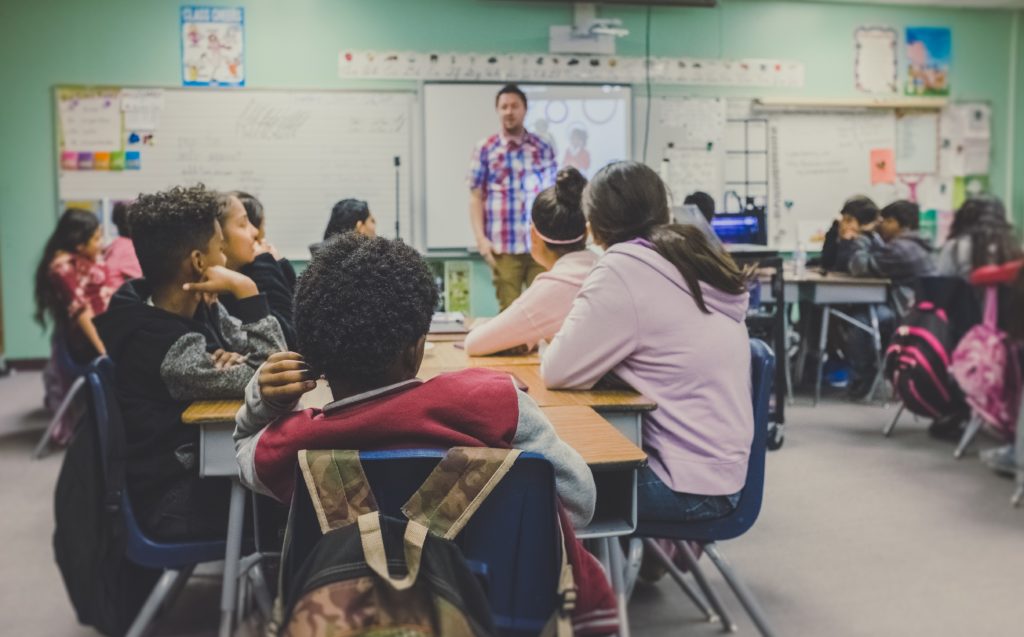When I was a teacher, we were always either prepping for testing or in testing mode. As an adult administering the tests, I felt drained. I could only imagine how the students felt.
I tried to ease the atmosphere just a bit. Before beginning a standardized test, I asked students to tell me one thing they liked about themselves and a skill or trait they had that made them a winner. The heaviness in the room would begin to dissipate as their minds shifted to more positive territory.
If only more teachers tried to ease their students’ testing anxiety, what a difference that could make!
Most children in the US under age 18 are required by law to attend school. This suggests that one of the best places to ensure an equal chance at success is in our schools, but how do you measure student success? Is it the equivalent of a high score on a standardized test?
Student success is about so much more than high test scores. I was fortunate to be influenced by people who encouraged me to not fall under a binary sense of success, one of them being my 12th grade “Theory of Knowledge” teacher, Mrs. Amy Scott.
“As a teacher, I want them (students) to question everything. An old proverb states, ‘Once before you die, you should ask, where am I headed and why?’ Many of our young people have never been asked this question,” Scott says
By instilling this curiosity in students, you give them a deeper sense of purpose. Studies showthat giving students an intervention that provides a deeper purpose for learning can even cause GPAs to rise.
Changing our education system is within reach. For instance, Power U in Miami is an organization that seeks to empower and unite youth in inner city schools and ensure they have a voice and representation.
According to Niki Thaís, a community organizer with Power U, the budget is there to make change, schools just prioritizing other things.
“So much of our current education system prioritizes privatization, policing, harsh discipline, and fails to foster safe and supportive environments,” Thaís says.
I have found countless texts on the importance of educators implementing stress management techniques, emotional intelligence, and the need for emphasis on creativity. And I find it odd that when I was a teacher, I wasn’t recommended any of this literature.
So I’ve done my own research and analyzed what I learned and experienced in my five years of teaching. Here are seven ways that our education system isn’t making the cut and how we can fix them.

1. Publicly funded schools don’t receive enough support
A big problem is that the education quality of the future leaders of our nation isn’t a priority. The money we can make from them is.
I’ve seen it from the inside. Our education system is nothing more than a business model that sees students as a price tag and testing as the pinnacle of a student’s worth and progress.
Even some progressive approaches, like Waldorf schools, prove to be classist with tuition costs only making the program available for those who can afford it, but not for those who need the support the most.
Power U understands that students and teachers lack fundamental support. Thaís says the students and parents she interacts with are begging to be treated as whole beings and are longing for tools and environments to develop emotionally, intellectually, and spiritually in a collective way.
What I’m suggesting is restructuring the very core of what education aims to give its students — not just a diploma, but a real chance at navigating multiple dimensions of life and being successful at them.
2. Creativity is always the first thing cut from the classroom
Education teaches structure, which isn’t a bad thing. Without balance though, it creates robots that seek to be fed stimuli and spit out answers or frustrates those that don’t learn that way.
“Knowing lots of facts in and of itself has some value, and it is also true that our students don’t have to become starving artists to find their passion, but it is our job as educators to give them options,” Scott says.
Creativity in schools gives students the chance to practice what they learn outside of the classroom.
Creativity helps me solve problems and gives me hope that I can overcome stressors that arise. Unfortunately, when there are budget cuts in education, the arts and extracurricular activities usually take a hit, even though what those programs give to students is actually invaluable.
3. We don’t teach emotional intelligence (EI)
How can we try to balance the EI of children who are securely attached and those that suffer from some level of insecure attachment based on their upbringings?
In order to be fully functioning beings, it’s beneficial for individuals to reason with all aspects of themselves.
According to David Walton’s book, Introducing Emotional Intelligence: A Practical Guide, emotional experience can inform our decisions for the better and act as a way to help us manage stress, cope with depression, and overcome anxiety.
When you teach EI in the classroom, standards are set from the start on which displays of emotion are acceptable and which are not.
How much bullying could we prevent if kids were taught that expressing distress in tears is acceptable, but should be paired with some sort of verbal communication of what is wrong? How much easier would it be for us later in life to speak up on what pains and distresses us, and how much better would we be at responding to these highly sensitive situations?
Learning EI at a young age would help us better place our emotions and the actions of others as adults. Regulating emotions not only helps reduce students’ stress and anxiety, it’s also been proven to improve academic performance.

4. We don’t teach true and diverse histories
More often than not, education (especially geography and history) is taught in a way that glorifies colonization and Western ideas, teaching students to carry pride for their superiorities, underemphasize their society’s shortcomings, and be less accepting of people who are different than they are.
How much community would we inspire and how much hate could we prevent by decolonizing our history syllabus across the board?
The problem with history as it’s taught via textbooks is that it’s one story, one perspective. The events can be pinpointed to a place, date, and time, but their lasting effects are often only told from one viewpoint.
In one case, Texas ruled to downplay the role of slavery in the cause of the Civil War in textbooks. Samantha Manchac, a middle school US History teacher in Texas, has resolved to teach in a way that allows students to be critical.
In an NPR article, Manchac said she feels the new textbooks are “definitely an attempt in many instances to whitewash our history, as opposed to exposing students to the reality of things and letting them make decisions for themselves.”
Students need to understand the truth about history so it has the effect of progression, not regression.
“History and culture has been going on long before European colonization. There are many ways and sources to pull from to teach it. I pull from several books so that I can use overarching themes to decolonize my syllabus,” says Simone Russell, an 8th grade US History teacher in Miami.
It’s imperative to Russell to revolutionize the way she teaches her students, being that they come from such diverse backgrounds. They must understand historical trends without them being whitewashed or told from a one-sided perspective.
5. We don’t teach financial literacy and independence
As soon as we graduate, we’re expected to know how to handle and earn money.
In cases where college is concerned, this can mean large financial responsibilities, such as student loans, yet besides playing with principal and interest rates briefly in math, I didn’t learn any finance in school.
Students leave college with more questions about money than answers. Luckily, the National Finance Educators Council, U.S Bank, and other organizations have developed programs to teach financial literacy.
If financial literacy is’t incorporated into the 7-hour school day, there’s no way to guarantee each student has equal access to it, as it comes down to time, internet access, and knowledge that these programs exist.
6. We don’t give students enough positive reinforcement
Consequences without rewards make for a dysfunctional equation. We ask for more and more from our students while giving them less and less. More tests and more requirements are added, yet we aren’t leading students any closer to the reason why they should complete them,
I strove for good grades in school because the first straight-A report card I brought to my mom brought her to tears. That became my “why,” but what if she were indifferent, or worse, not present in my life? No one else was looking to give me incentives.
Teachers are overwhelmed, underpaid, and having their success measured only by their students’ performance, a feeling I remember all too well — no wonder they forget to give positive reinforcement.
Studies show that younger children respond better to positive reinforcement than negative feedback, which should inform educators that more incentive programs would help them get desired results.
Embarrassing, publicly scolding, and alienating students breeds more resentment than positive results. A combination of positive reinforcement and instilling purpose has better results.

7. We need more professional development and support for teachers
One way I did feel supported was the availability of professional development opportunities to improve my teaching skills and my school’s support of these endeavors.
The school invested a lot into allowing me to attend conventions and workshops, whether local or out-of-district. These renewed my thirst for knowledge and opened me up to different strategies that were helping teachers like me that I wouldn’t have known otherwise.
Professional development rejuvenates and renews educators’ thirst to educate. I also understand that it’s a privilege. Not all schools can afford to support their teachers in this way, especially the publicly funded schools that need it the most.
Teachers who have to take care of their families or with no reliable transportation may not be able to travel out of town for days to attend a conference, which makes in-house support groups and book clubs for teachers fundamental across the board.
***
There are texts, studies, and programs aimed at combating all of the issues I mentioned in this article. The challenge is ensuring all teachers can access this knowledge, prioritize this knowledge, and seamlessly implement it.
Originally published on Everyday Feminism.
Reyna Noriega is a Contributing Writer for Everyday Feminism. As a 25 year old Afro-Latina Miami Native, Reyna has had a tumultuous journey of self discovery and acceptance. Her art serves as her superpower, a way to heal the parts of her that were broken in times of strife. She uses her art, writing and experience in education to encourage others to live their truest, most fulfilling lives in the present wherever they are, with whatever they have, while working towards the “more” they envision. In 2017 she published a collection of poetry following the journey of self discovery hidden inside of “new love.” She has also written for various online and print publications such as Northside Magazine, Thought Catalog and Cynical Mag.

